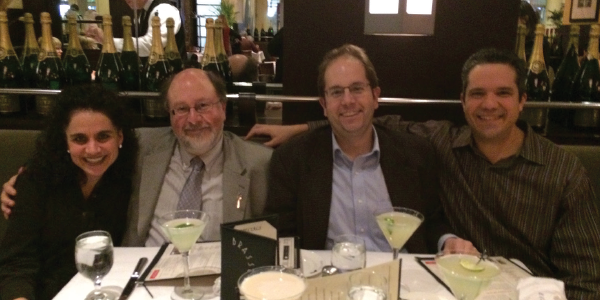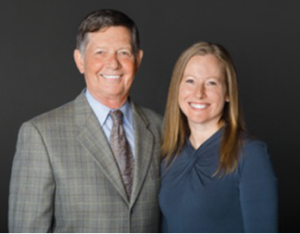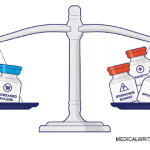David, “on a number of occasions, has asked me my thoughts on specific issues. It’s nice to have that one-on-one situation where I can voice my thoughts and concerns and know someone is going to listen.”
2 for 1 in Boston
Three days before starting at University of Massachusetts Medical School in Worcester, Mass., in August 1995, Tina Elias-Todd, MD, met Derrick Todd, MD. A few years later, Tina was a first-year fellow at Boston Medical Center—after having been drawn to the field through its underlying immunology—when Derrick was a fourth-year student, debating between rheumatology and endocrinology.
One morning, at roughly 1 a.m., a patient came to Derrick with a hot, swollen knee. “I needed somebody to help me tap the knee,” he says. “But there was no one in the hospital who could help me do that, at least not immediately. So I actually called my wife in the middle of the night and said, ‘Tina, how do you tap a knee?’ And her sleepy words were something like, ‘Are you kidding me? Are you calling me in the middle of the night about this? You just feel for the fluid and jam the needle in there!” That’s how I learned how to do one of the basic procedures of rheumatology.”

Tina Elias-Todd, MD, David Daikh, MD, PhD, Brian Daikh, MD, and Derrick Todd, MD
After three decades of marriage and two kids, the husband-and-wife doctor duo still work to be a rheumatic resource for each other.
“It’s something that we do at home on a fairly routine basis, because we are always trying to sort out these different clinical conundrums and challenges,” says Tina, who happens to also be a cousin of the the Daikh brothers. “I will frequently tell my patients as I’m working them up, ‘Yeah, I discussed my case with my colleagues at work, and oh, by the way, my husband is also a rheumatologist. You benefit from two for one.”
In a field like rheumatology, in which detective work is half the job, the couple says having another beat cop in the house is a boon to them and their patients. Derrick practices at Brigham and Women’s Hospital in Boston, while his wife is a senior staff physician at Lahey Clinic Medical Center in the Boston suburb of Burlington.
“You know the story, if you put 10 rheumatologists in a room and ask them about a case, you’ll get 20 opinions,” Derrick says. “In order to treat a patient with confidence, you have to be confident in the diagnosis yourself. And if you can’t convince a colleague that your position is correct, then you have to admit it’s in the gray zone. I’ve used Tina as a sounding board quite frequently, and vice versa.”
‘It’s Just the Best’

Father and daughter, William Arnold, MD, FACP, MACR, and Erin Arnold, MD, FACR

